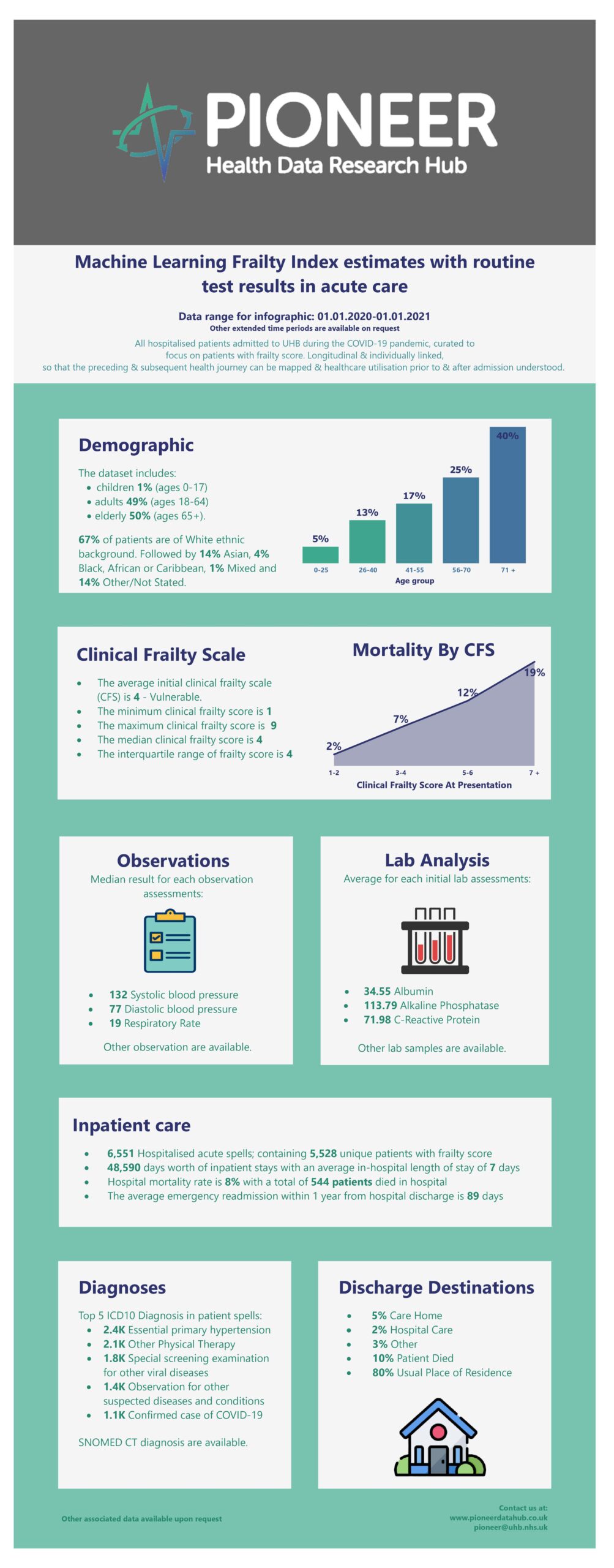- Introduction
- Data Coverage
- Further Details
- Request Access
Frailty is a critical measure in health care for evidence-based clinical decision making. An accurate electronic Frailty Index (eFI) at admission will be beneficial to both patients and medical service for prompt and appropriate assessment and management in acute care. Since 2020, Clinical Frailty Scale (CFS) was introduced to QE to screen and quantify frailty and fitness of individual patients with Covid 19 at admission. Essentially, CFS is a value derived from 92 baseline variables (also referred to as deficits) using a cumulative model. An eFI that was derived from 31 routinely collected test results showed that it has promising identification power for high-risk frailty patients in aged cohort (>65), indicating the potential of a simpler and more efficient model for frailty estimation. 

Geography The West Midlands (WM) has a population of 5.9 million & includes a diverse ethnic & socio-economic mix (42% non-white within Birmingham). EHR UHB is one of the largest NHS Trusts in England, providing direct acute services & specialist care across four hospital sites, with 2.2 million patient episodes per year, 2750 beds & an expanded 250 ITU bed capacity during COVID. UHB runs a fully electronic healthcare record (EHR) (PICS; Birmingham Systems), a shared primary & secondary care record (Your Care Connected) & a patient portal, “My Health”. Scope All hospitalised patients admitted to UHB during the COVID-19 pandemic, curated to focus on patients with frailty score. Longitudinal & individually linked, so that the preceding & subsequent health journey can be mapped & healthcare utilisation prior to & after admission understood. The dataset includes highly granular patient demographics & co-morbidities taken from ICD-10 & SNOMED-CT codes. Serial, structured data pertaining to acute care process (timings, discharge locations), presenting complaint, all physiology readings (Clinical Frailty Scale, pulse, blood pressure, respiratory rate, oxygen saturations), blood results (albumin, glucose, platelets, sodium, c-reactive protein, urea and others) and all outcomes. Available Supplementary Data Matched controls, ambulance, OMOP data, synthetic data. Available Supplementary Support Analytics, model build, validation & refinement, A.I., data partner support for ETL (extract, transform & load) process, clinical expertise, patient & end-user access, purchaser access, regulatory requirements, data-driven trials, “fast screen” services.



